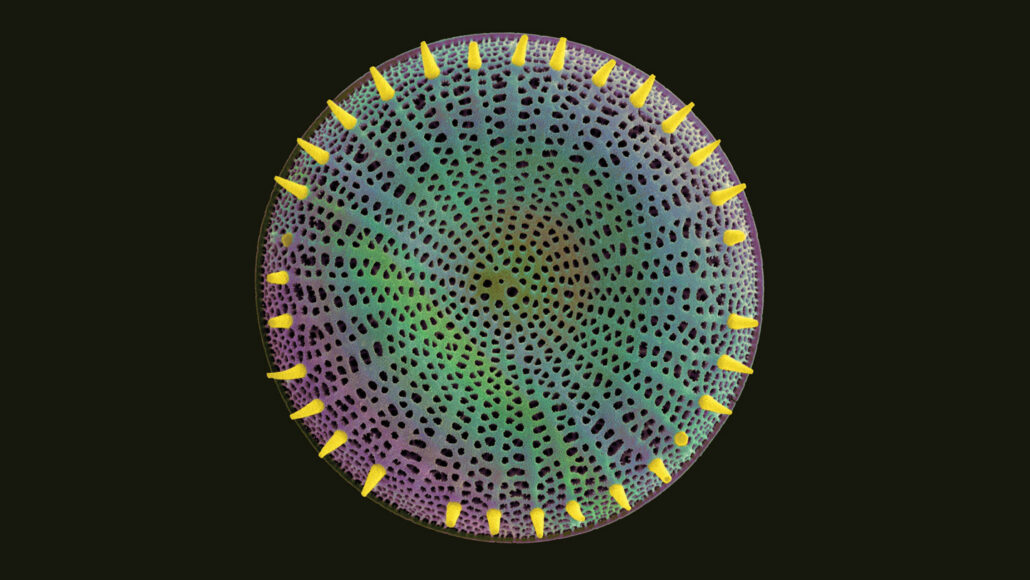Questions for ‘What the weird world of protists can teach us about life on Earth’

This is a microscopic diatom, a type of protist. It has a hard, porous cell wall.
Dennis Kunkel Microscopy/Science Photo Library/Alamy Stock Photo
Share this:
- Share via email (Opens in new window) Email
- Click to share on Facebook (Opens in new window) Facebook
- Click to share on X (Opens in new window) X
- Click to share on Pinterest (Opens in new window) Pinterest
- Click to share on Reddit (Opens in new window) Reddit
- Share to Google Classroom (Opens in new window) Google Classroom
- Click to print (Opens in new window) Print
To accompany ‘What the weird world of protists can teach us about life on Earth’
SCIENCE
Before Reading:
- List all the types of microscopic organisms you can think of. In general, are there more large (macroscopic) organisms in the world or more small (microscopic) ones?
- If you wanted to discover a brand-new species of life on Earth, what type of environment would you visit to look for one? Do you think it’s likely that there are still undiscovered species on our planet?
During Reading:
- What are the six kingdoms in the “tree of life”?
- According to one study, how much carbon do the world’s protists contain compared to animals?
- What is one way that Euplotes can move through the water? What type of technology might these protists help inform?
- How does Lacrymaria catch its prey?
- Do nibblerids usually eat prey that is larger or smaller than themselves? How do they eat this prey?
- Why do protists move through water so differently than people do? Give one example of an action in the water that would have different results for a protist versus a person.
- How did Sebastian Hess and his colleagues observe the way Idionectes uses its flagellum to swim?
- Where did Kiran More find new species of protists? How many different species did he end up finding in his samples?
- How do vampyrellid amoebas eat?
- What is one way that microbes enabled the evolution of multi-celled organisms on Earth?
After Reading:
- About protists, Sebastian Hess says, “They really behave like entire organisms … but they are just cells.” Watch the video of Euplotes in the story. Describe at least two behaviors you observe. Do your observations support Hess’ comment? Explain why or why not.
- In some ways, Maureen O’Malley suggests, multicellular life on Earth is weirder — or more unusual — than single-celled life, like protists. What are two pieces of evidence from the story that support the idea that single-celled organisms are more characteristic of life on Earth? Based on what you read, do you agree or disagree with this idea? Explain your answer.